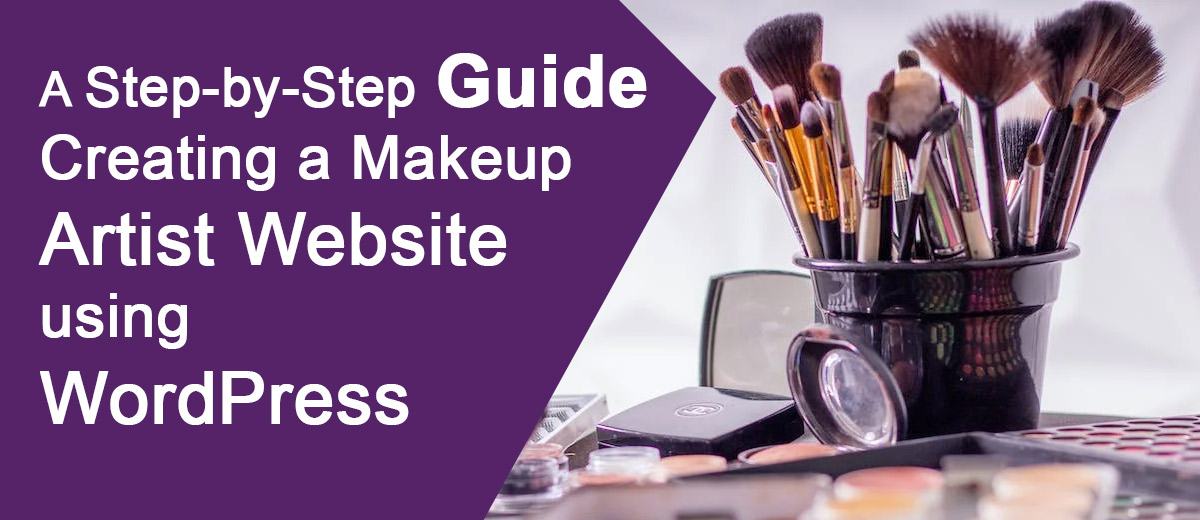In the digital age, a captivating online presence is essential for professionals in various industries, and makeup artists are no exception. A well-designed website not only showcases your skills and portfolio but also acts as a powerful tool to attract clients and build your brand. In this guide, we’ll walk you through the process of developing a website for a makeup artist using WordPress.
Step 1: Choose a Domain Name and Hosting Provider
Start by selecting a unique and memorable domain name that reflects your brand. Use a reliable hosting provider to ensure your website runs smoothly. Popular hosting options for WordPress include Bluehost, SiteGround, and HostGator.
Step 2: Install WordPress
Most hosting providers offer a simple, one-click installation for WordPress. Once installed, log in to your WordPress dashboard, and you’re ready to start building your makeup artist website.
Step 3: Select a WordPress Theme
Choose a theme that aligns with your style and showcases your work effectively. WordPress offers a wide range of free and premium themes. You can explore themes on the WordPress Theme Directory or consider premium options from platforms like ThemeForest.
Step 4: Customize Your Website
Go to the WordPress Customizer to personalize your site’s appearance. Upload a logo, set your brand colors, and customize fonts. Ensure your website reflects your unique aesthetic and brand identity.
Step 5: Create Essential Pages
a. Home Page:
- Introduce yourself with a brief bio.
- Highlight your specialties and services.
- Include high-quality images of your work.
b. Portfolio/Gallery:
- Create a dedicated page to showcase your makeup artistry.
- Organize images into categories (e.g., bridal, editorial, special effects).
c. Services:
- Detail the makeup services you offer.
- Include pricing information if applicable.
d. Contact Page:
- Provide your contact details.
- Integrate a contact form for inquiries.
- Include links to your social media profiles.
e. About Me:
- Share your journey, qualifications, and passion for makeup.
Step 6: Add a Blog (Optional)
Consider adding a blog to your website to share makeup tips, trends, and behind-the-scenes content. Regular blog posts can improve your website’s search engine ranking.
Step 7: Integrate Social Media
Connect your social media accounts to your website. This integration enhances your online presence and allows visitors to easily follow you on platforms like Instagram, Facebook, and Pinterest.
Step 8: Implement SEO Best Practices
Optimize your website for search engines by using relevant keywords in your content, meta tags, and image alt text. Install an SEO plugin like Yoast SEO to help with optimization.
Step 9: Ensure Mobile Responsiveness
Many users access websites through mobile devices, so it’s crucial that your makeup artist website is mobile-friendly. Choose a responsive theme, and regularly check your site on various devices to ensure a seamless experience.
Step 10: Install Essential Plugins
Enhance your website’s functionality with plugins. Recommended plugins for makeup artists include:
- Elementor or Beaver Builder: Drag-and-drop page builders for easy customization.
- Smash Balloon Instagram Feed: Display your Instagram feed on your website.
- Contact Form 7 or WPForms: Create customizable contact forms.
- Yoast SEO: Optimize your site for search engines.
Step 11: Regularly Update Your Content
Keep your portfolio, blog, and service pages up-to-date with your latest work and information. Regular updates show visitors that your business is active and thriving.
Step 12: Test Your Website
Before launching your website, thoroughly test it to ensure proper functionality, responsiveness, and user-friendliness.
Step 13: Launch Your Website
Once satisfied with the design and content, it’s time to launch your makeup artist website. Announce the launch on your social media platforms and start promoting your online presence.
Congratulations! You’ve successfully created a stunning website for your makeup artistry using WordPress. Keep updating your portfolio, engaging with your audience, and leveraging your website to showcase your talent and attract new clients


